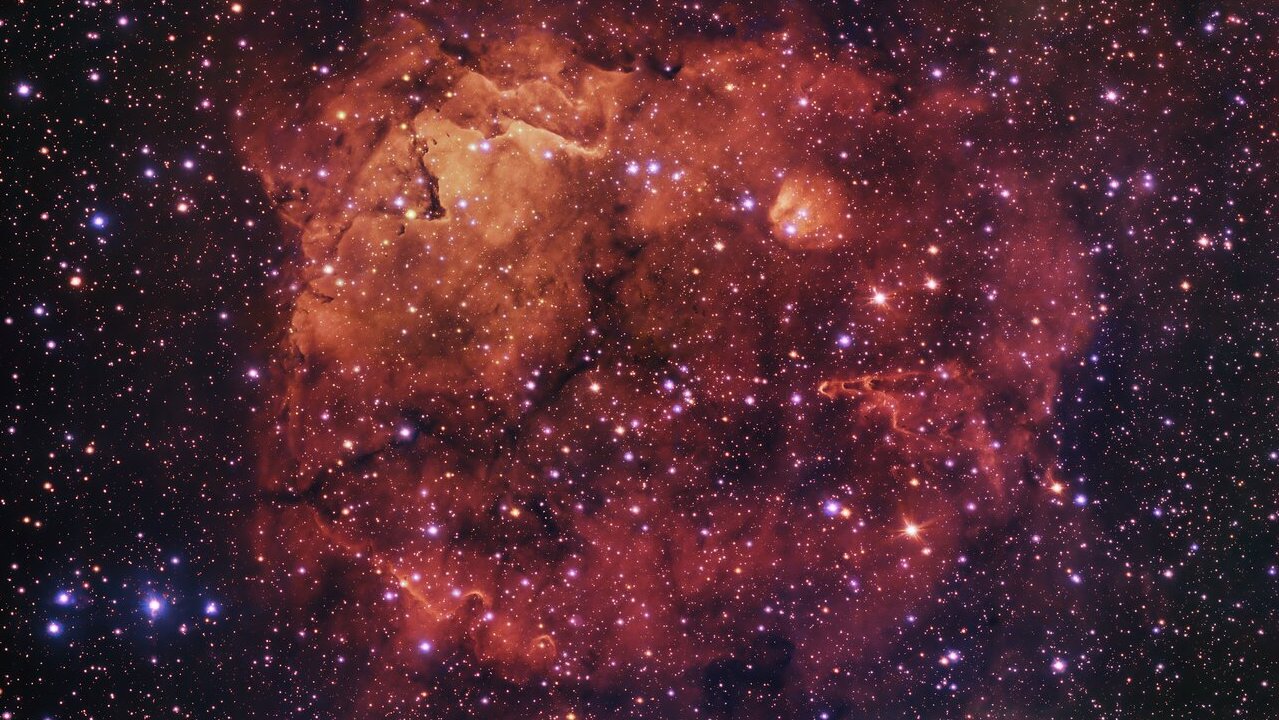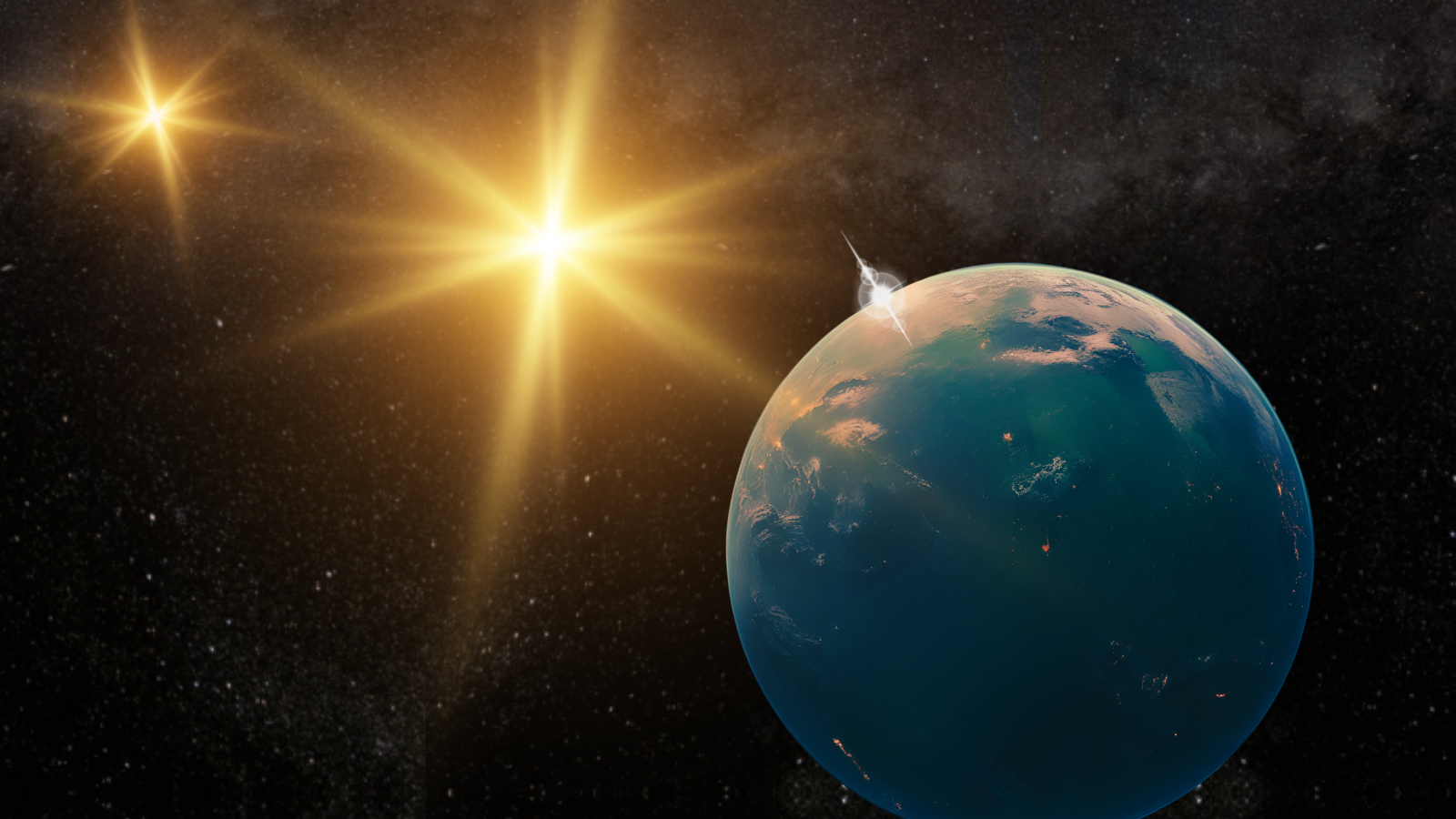Can you see the cosmic 'cat' grinning into one of the world's largest telescopes in this photo? (video)
Data collected with the Very Large Telescope shows a vast region of gas and dust resembling a celestial cat with a cluster of young stars right under its nose.
Even the Cheshire Cat in Lewis Carroll's classic tale Alice's Adventures in Wonderland, noted for its mischievous grin, didn't have a smile as wide as this cosmic cat.
A distant stellar nursery appears as a grinning celestial feline with a head that is around 150 light-years wide in a new image released by the European Southern Observatory. The near-circular cloud of orange and red dust was captured in intricate detail by the Very Large Telescope (VLT) located at the Paranal Observatory in the Atacama Desert of Northern Chile.
The feline-looking cloud is the brightest part of the Sh2–284 nebula and is host to a huge population of infant stars created as over-dense patches of gas and dust collapse under their own gravitational influence. The stellar nursery is located around 15,000 light-years from Earth in the constellation of Monoceros.
Related: JWST finds cosmic monsters lurking at heart of ancient star clusters
Directly under the nose of this celestial cat is a cluster of young stars known as Dolidze 25. This is an example of an open cluster, a collection of stars that are believed to have formed at more or less the same time from the same gas cloud.
Dolidze 25 is packed with a class of stars called OB stars, which are blue in color, massive, and incredibly hot. OB stars have hydrogen-burning lives of between a million years to 560 million years, depending on their masses, with larger examples burning through their fuel more rapidly. This may seem like an unimaginably long time, but compared to the ten billion-year hydrogen-burning predicted lifespan of the sun, which it is roughly halfway through, it is the blink of a cosmic eye.
Yet, despite their short lifetimes, OB stars blast out an incredibly large amount of ultraviolet radiation, and this has a significant effect on their environments. In the case of the Sh2–284 nebula, the star-cluster Dolidze 25 produces a large amount of radiation and powerful stellar winds.
Breaking space news, the latest updates on rocket launches, skywatching events and more!
While the radiation strips electrons away from the atoms that make hydrogen gas in the region, thus ionizing it and causing it to glow orange, the stellar winds act like a plow, pushing away gas and dust. This hollows out the region at the center of the massive orange cloud.
On the flip side of this, when these stellar winds meet dense pockets of matter, these offer more resistance and cause the areas around them to be eroded away first. This results in the creation of "pillars" of material that can be seen radiating out from the heart of Sh2–284.
These can be seen in this VLT image, and while they may appear small in comparison to the entire cloud, these "cosmic cat whiskers" are several light-years wide and contain dense gas and dust that become the building blocks of new stars.

Robert Lea is a science journalist in the U.K. whose articles have been published in Physics World, New Scientist, Astronomy Magazine, All About Space, Newsweek and ZME Science. He also writes about science communication for Elsevier and the European Journal of Physics. Rob holds a bachelor of science degree in physics and astronomy from the U.K.’s Open University. Follow him on Twitter @sciencef1rst.


